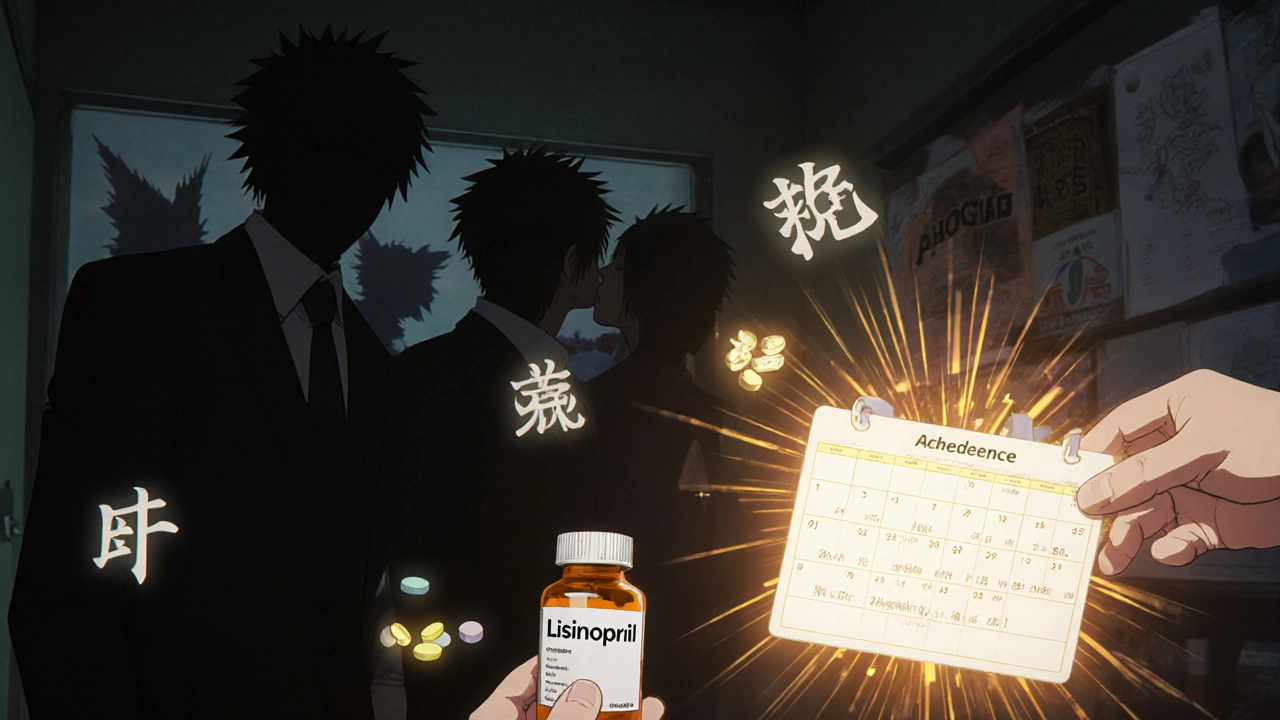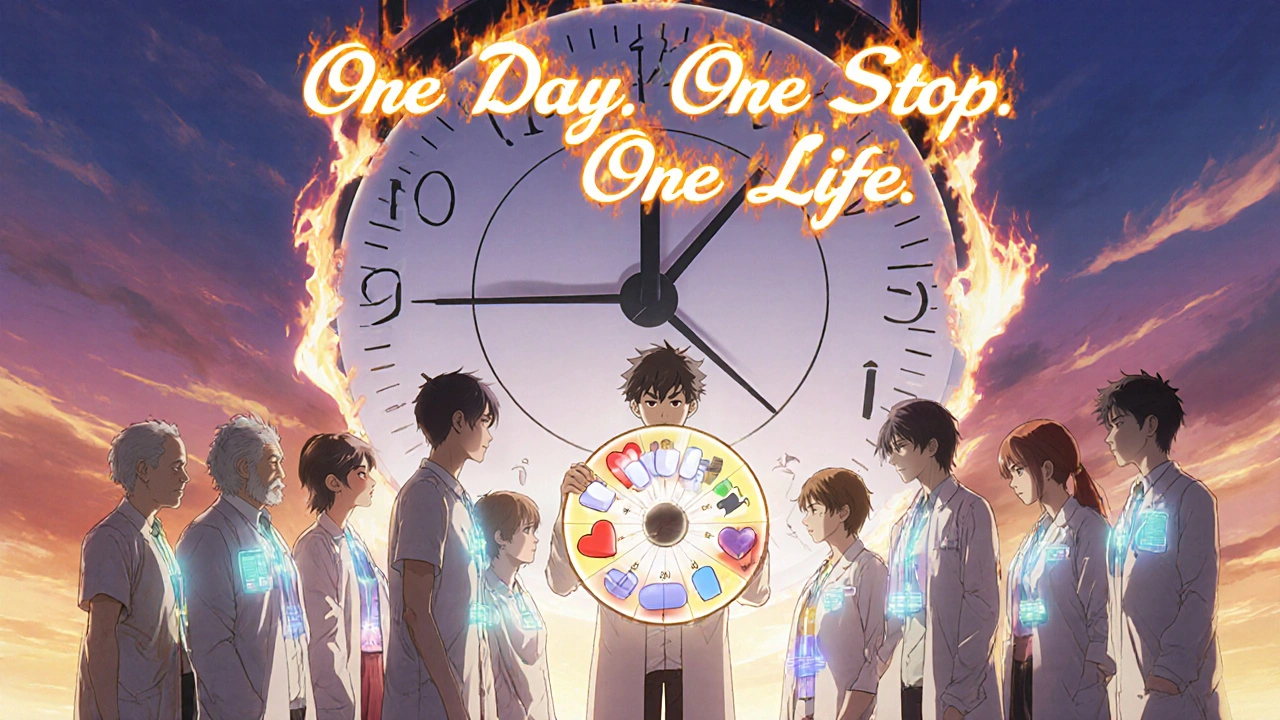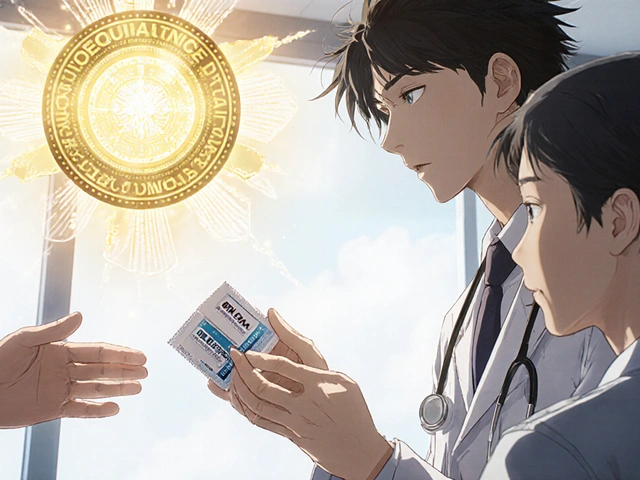Imagine taking five different pills every day for high blood pressure, diabetes, cholesterol, arthritis, and thyroid issues. Now imagine each one has a different refill date-some every 30 days, others every 45, some every 90. One runs out on a Tuesday, another on a Friday. You forget to call the pharmacy, the mail-order delivery gets delayed, or you’re too tired to drive after work. By the time you get the next refill, you’ve missed three days of your blood pressure med. That’s not just inconvenient. It’s dangerous.
Medication gaps like this aren’t rare. Nearly two out of three Americans don’t take their prescriptions as directed. And it’s costing the U.S. healthcare system over $300 billion a year in avoidable hospital visits, ER trips, and worsening conditions. The fix isn’t more pills or better apps-it’s simpler: medication synchronization.
What Is Medication Synchronization?
Medication synchronization, or med sync, is when your pharmacy lines up all your regular, long-term prescriptions to be refilled on the same day each month. Instead of juggling six different refill dates, you pick up everything at once-usually once a month. It’s not magic. It’s logistics. But it works.
This isn’t new. A pharmacist in Long Beach, California, started it in 1995 because he saw patients missing doses because they couldn’t keep track. Today, nearly 78% of independent pharmacies and 65% of big chain pharmacies offer it. It’s backed by the American Society of Health-System Pharmacists (ASHP), the Academy of Managed Care Pharmacy (AMCP), and the National Community Pharmacists Association (NCPA). They all say the same thing: when you simplify refills, people take their meds.
Who Benefits the Most?
Not everyone needs it. But if you’re on three or more daily maintenance medications-like statins, metformin, lisinopril, levothyroxine, or amlodipine-you’re a perfect candidate. So are:
- Elderly patients who have trouble driving or remembering dates
- People with memory issues or cognitive decline
- Working parents or caregivers who don’t have time to make multiple pharmacy trips
- Patients who’ve been hospitalized for medication-related issues
- Anyone who’s ever missed a dose because they ran out
A 2022 NCPA survey found that patients in med sync programs cut their pharmacy visits from 12.4 times a year down to just 4.2. That’s not just saving time-it’s reducing stress, missed doses, and risk of complications.
How It Actually Works
It sounds simple, but the process has real steps. Here’s what happens behind the scenes:
- Eligibility check - Your pharmacist reviews your list. Only maintenance meds qualify. Antibiotics, inhalers for occasional use, or pain pills you take as needed? Those stay on their own schedule.
- Medication reconciliation - The pharmacist confirms what you’re actually taking, checks for duplicates, and removes anything you’ve stopped.
- Anchor date selection - You and your pharmacist pick one day each month that works best. Maybe it’s the first Tuesday, or the day after payday. It’s your choice.
- Short-fill adjustment - If your prescriptions don’t all line up, the pharmacy gives you a partial refill to bridge the gap. For example, if your blood pressure med has 20 days left but your other meds are due in 10 days, you’ll get a 10-day supply now to sync up. This is legal and common. The pharmacy documents it as a one-time adherence adjustment.
- Monthly check-in - On your pick-up day, your pharmacist calls or texts to ask: Are you still taking everything? Any side effects? Did your doctor change anything? This isn’t just refill service-it’s ongoing care.
It takes about 15-20 hours of staff time to launch the program at a pharmacy. That’s why not every pharmacy does it well. But the ones that do see patients sticking with their meds 15-25% more often.
What Doesn’t Work in Med Sync?
Not every pill fits. Medications that are used on an as-needed basis don’t belong in the sync system:
- Inhalers for asthma or COPD (if used only during flare-ups)
- Antibiotics (you don’t take them monthly)
- Acute pain meds like oxycodone or hydrocodone
- Emergency medications like nitroglycerin or epinephrine auto-injectors
Also, if your doctor writes a 30-day prescription with only one refill, your pharmacy can’t sync it. They need a 90-day supply with three refills to make the monthly cycle work. That’s why many pharmacies now reach out to doctors directly-asking them to write 90-day prescriptions with refills. The AMA calls this the “90 x 4” process: 90-day supply, four refills total.
And here’s the kicker: if your doctor forgets to renew your prescription after three months, your whole sync system breaks. That’s why pharmacies now flag these prescriptions in their systems and send alerts to prescribers.

Insurance and Coverage Issues
Medicare Part D and many private insurers allow early refills for synchronization. But not all do. About 22% of patients reported initial problems with coverage when they got a short-fill to sync up. The fix? Pharmacies now document these short fills clearly as “adherence adjustment” on the prescription label and in their system. If your insurance denies it, ask your pharmacist to call them. Most will approve it if the paperwork is correct.
Some insurers even reward pharmacies for high sync rates. Starting in 2025, CMS plans to tie Medicare Part D star ratings to how many seniors are enrolled in med sync. Pharmacies with over 40% enrollment could get bonus payments. That means more pharmacies will offer it-and faster.
Real Results, Real Stories
One 72-year-old woman in Portland, on six daily medications, used to miss doses because she couldn’t keep track of which pill was due when. After joining med sync, she went from missing 4-5 doses a month to zero. Her blood pressure dropped into the normal range. Her doctor noticed. So did her daughter, who used to drive her to the pharmacy every other week.
A 2022 survey found that 87% of patients using med sync were satisfied. 78% said they took their meds more consistently. 63% said they made fewer trips to the pharmacy. One patient on a pharmacy forum wrote: “My pharmacist calls me every month to review my meds-it’s like having a medication coach.”
For caregivers, the impact is even bigger. ASHP case studies show caregivers of elderly patients reported a 40% drop in missed doses after implementing med sync.
Why It’s More Than Just Convenience
Med sync isn’t just about picking up pills on one day. It’s a safety net. When you come in once a month, your pharmacist can catch problems early:
- Is your new blood thinner causing bruising?
- Did your diabetes med make you dizzy?
- Are you still taking that pill your doctor said to stop?
These aren’t theoretical checks. They’re real conversations that prevent hospitalizations. The Congressional Budget Office estimates that if 60% of seniors on multiple meds used med sync, Medicare could save $4.2 billion a year by 2027 from fewer ER visits and hospital stays.
And it’s not just saving money-it’s saving lives. Missed doses of heart meds can lead to strokes. Skipping diabetes pills can cause kidney damage. Not taking antidepressants regularly can trigger relapses. Med sync reduces those risks by making adherence automatic.

How to Get Started
If you think you could benefit:
- Ask your pharmacist if they offer medication synchronization.
- Bring a list of all your current prescriptions-even over-the-counter and supplements.
- Ask them to review which meds qualify (only maintenance ones).
- Choose a refill day that fits your routine.
- Confirm they’ll call you each month to check in.
- If they say no, ask why. It might be insurance. It might be staff. But if one pharmacy won’t do it, another will.
Independent pharmacies are more likely to offer personalized anchor dates and longer conversations. Chains often have automated systems but better tech integration. Either way, you’re not asking for a favor-you’re asking for a proven safety tool.
What If It Doesn’t Work?
Some patients say they got confused during the first month because they received less medication than usual. That’s normal during the sync-up phase. Your pharmacist should explain it ahead of time. If they didn’t, ask them to walk you through it again.
If your insurance won’t cover the early refill, have your pharmacist call them. They know how to submit the right codes.
If your doctor won’t write 90-day prescriptions, ask your pharmacist to send a note explaining how it improves adherence. Many doctors don’t realize how big of a difference it makes.
And if your pharmacy doesn’t call you each month? That’s not med sync. That’s just a refill reminder. True synchronization includes ongoing clinical support.
Is medication synchronization the same as automatic refills?
No. Automatic refills mean your pharmacy orders your meds without you asking-but they still come on different dates. Med sync aligns all your maintenance prescriptions to one monthly pickup. It’s not just automation-it’s coordination.
Can I still get refills early if I need them?
Yes. Med sync doesn’t lock you in. If you run out early, you can still pick up your meds. But the goal is to prevent that from happening by syncing everything to one reliable date. Pharmacies track your usage and adjust if needed.
Does med sync cost extra?
No. It’s a free service offered by your pharmacy. Some even offer home delivery with sync programs. You pay the same copay-you just get it all on one day.
What if I stop taking one of my meds?
Tell your pharmacist. During your monthly check-in, they’ll ask if anything changed. If you’re no longer taking a med, they’ll remove it from your sync list and adjust your next pickup accordingly.
Can I enroll if I use mail-order pharmacy?
Yes, but it’s trickier. Mail-order pharmacies often have rigid refill schedules. Ask your local pharmacy if they can coordinate with your mail-order provider to align dates. Some do. Others recommend switching to a local pharmacy for full sync control.
Next Steps
If you’re on multiple chronic meds, don’t wait for a crisis. Talk to your pharmacist this week. Ask if they offer med sync. If they do, ask for a plan. If they don’t, ask why-and then ask another pharmacy. This isn’t a luxury. It’s a basic safety step for anyone managing long-term health.
Medication gaps don’t just happen. They’re built by complexity. Synchronization breaks that cycle. It’s not flashy. It’s not high-tech. But it’s one of the most effective, low-cost ways to keep people healthy-and out of the hospital.



